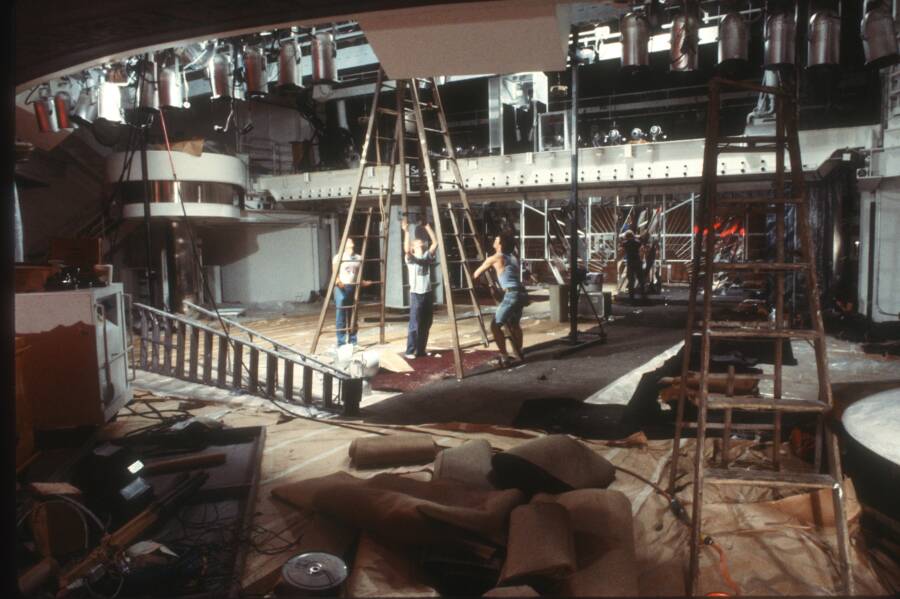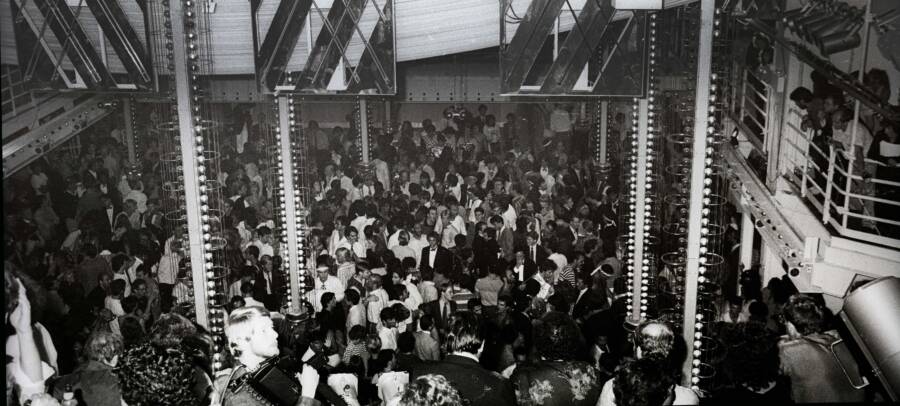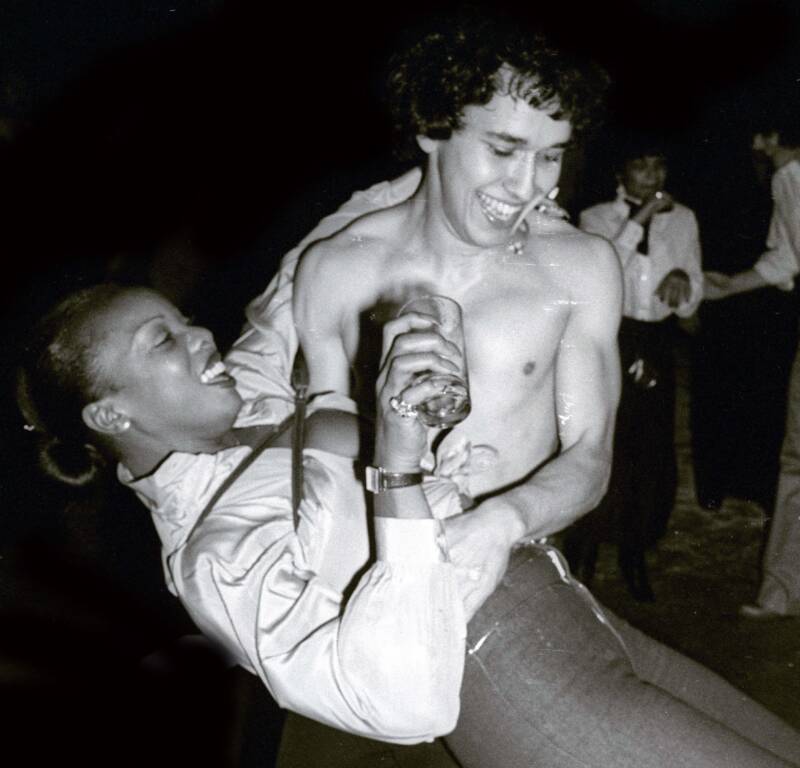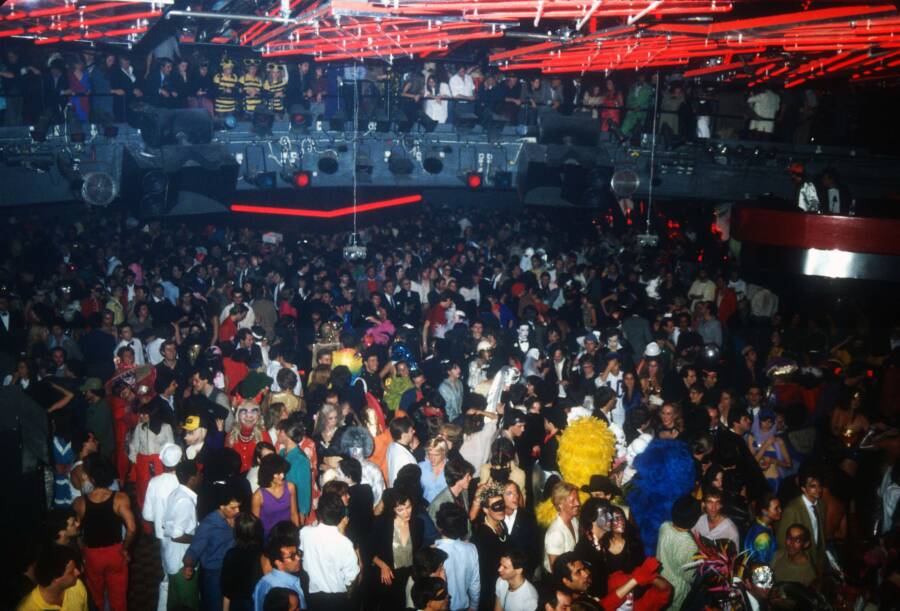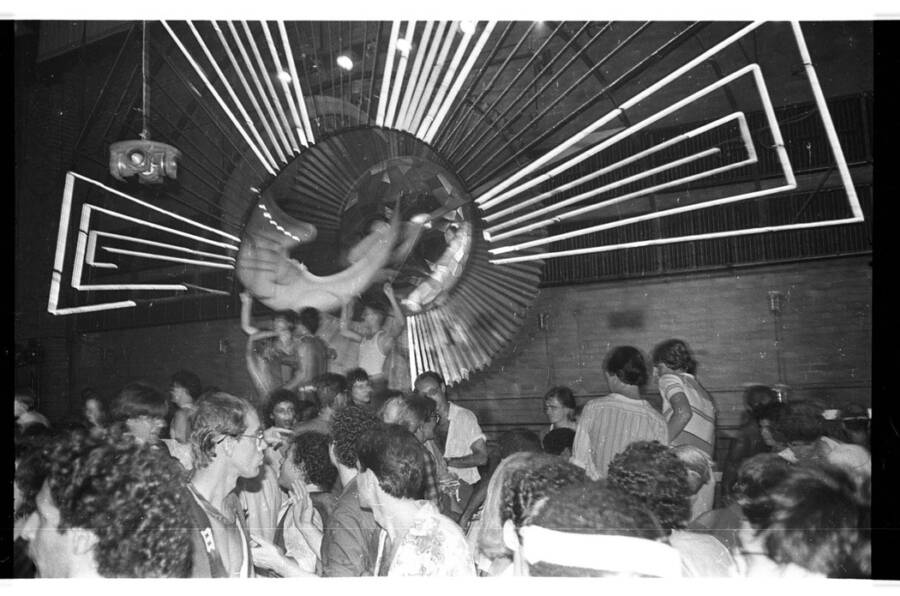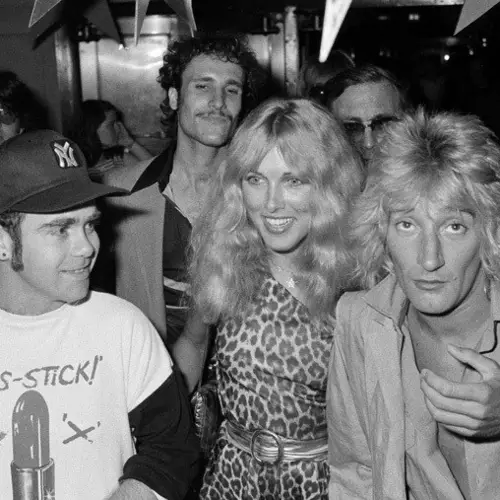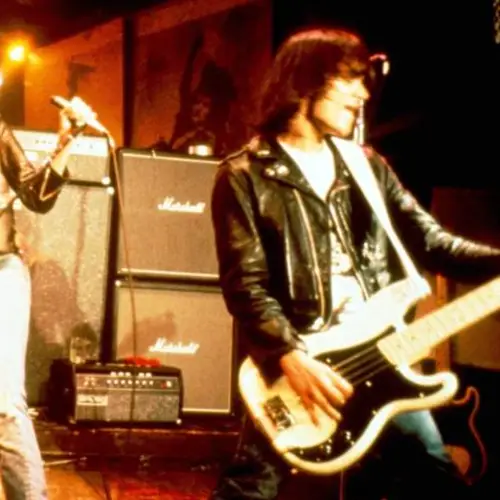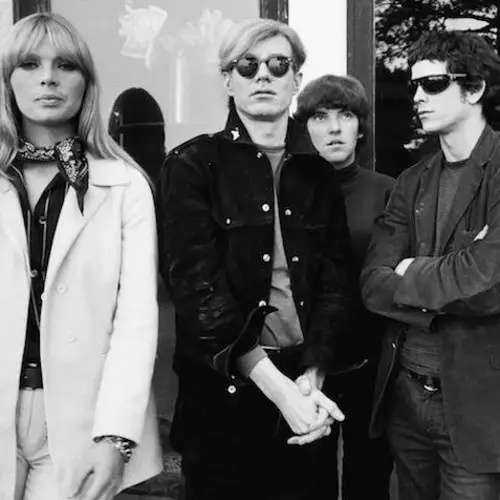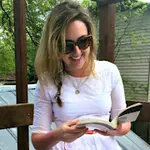These Studio 54 photos will take you inside the dance club that defined a generation and hosted celebrities from Andy Warhol to David Bowie.
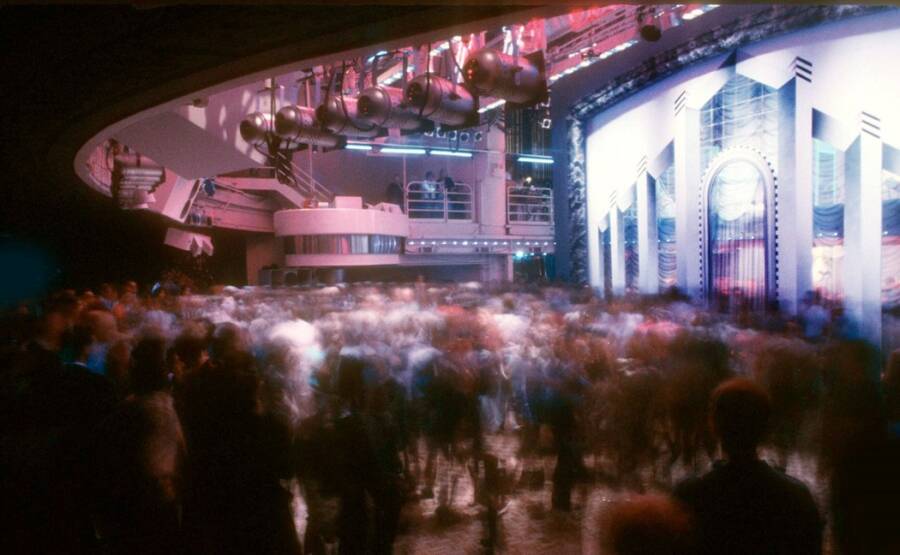
Adam Scull Studio 54 was once New York City’s hottest nightclub.
Drugs, drinks, and disco — Studio 54 had it all.
Steve Rubell and Ian Schrager opened the legendary club in 1977, and while it only lasted under their management for three years, it quickly cemented itself as the quintessential enclave for celebrities, fashionable disco lovers, and their favorite illicit activities.
Indeed, club regulars ranged from Mick Jagger and Andy Warhol to Elizabeth Taylor and David Bowie. And on its last night under initial management, Diana Ross serenaded Rubell and Schrader — of course surrounded by the likes of Jack Nicholson, Farrah Fawcett, and Sylvester Stallone, among others.
Relive some of Studio 54’s most classic nights.
Studio 54's Innocent Origins
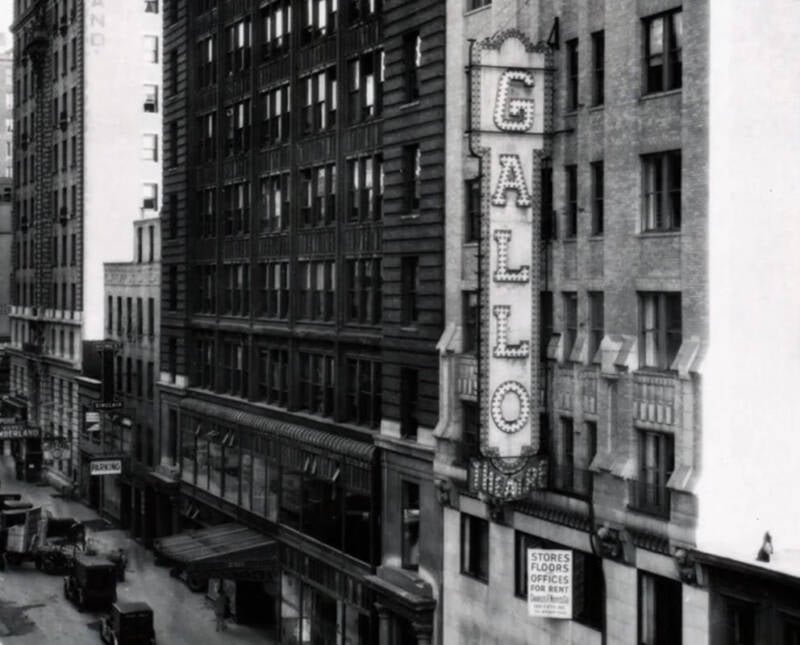
Spotlight on BroadwayThe Gallo Opera House in 1927.
In July 1926, Italian opera impresario Fortune Gallo purchased 254 West 54th Street in New York City's Hell's Kitchen. With a budget of $2 million, Gallo commissioned the construction of a 16-floor office building with a theater at its base.
On November 8, 1927, the building opened to the public under the name "Gallo Opera House."
Over the next few years, the building would be the site of several productions and fall into the hands of multiple leasers.
By 1929, leaser William R. Kane foreclosed on the building, and Hemphill Realty Corporation bought the theater for $1,045,000 at that year's auction.
In the 1930s, the Gallo Opera House became the New York Theater, hosting several productions until its closure in April 1940.
Then, in 1942 Columbia Broadcasting Services (CBS) leased the building as a radio and television studio. Between 1942 and 1976, CBS produced several television shows in the building, including What's My Line?, The Jack Benny Show, and I've Got A Secret.
In 1976, CBS met with Uva Harden, a German male model, to discuss selling the building to him. With the backing of New York financiers, Harden successfully purchased the building and set out on establishing New York's hottest nightclub.
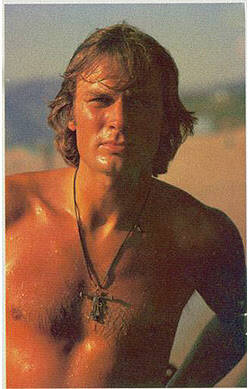
Kittens & ApronsGerman male model Uva Harden.
The Birth Of New York City's Most Infamous Nightclub
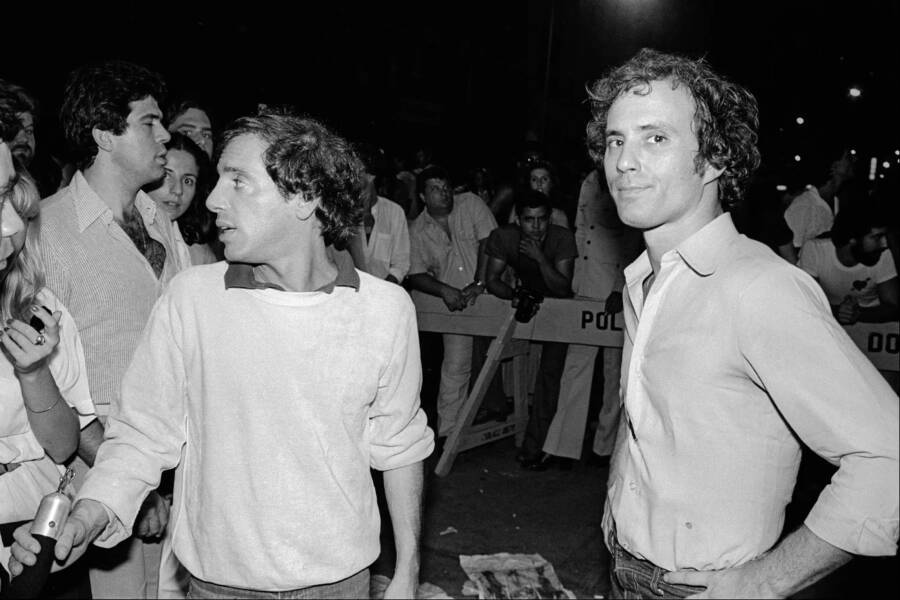
Zeitgeist FilmsSteve Rubell And Ian Schrager, co-owners of Studio 54.
During talks with CBS, Uva Harden met with Israeli entrepreneur Yoram Polany, Steve Rubell, and Ian Schrager to help finance the purchase.
In November 1976, Rubell and Schrager made a public announcement that the old CBS studio would become Studio 54, an elite nightclub.
At the time, disco was hugely popular among young Americans, and Studio 54 would be yet another popular discotheque in Manhattan.
"Disco has not gotten true credit," Robert Santelli, director and chief executive of the Experience Music Project and author of multiple books on rock and the blues, stated to the New York Times. "There's a great value in understanding the history of disco because it teaches us what America was about in the 70s."
Pictures from disco's heyday in the United States showed a carefree group enjoying their break from reality, one that was marred by war, economic decline, and social strife.
Rubell and Schrager spent over $400,000 on renovations, including the construction of a dance floor, disco booth, balcony, and floating platforms. During this renovation period, Polany willingly backed out of the business venture and Harden found himself suffocated under the weight of Rubell and Schrager's decision-making; the duo forced him out of the venture before the club's opening.
On April 26, 1977, the club officially opened, welcoming over 4,000 people. Its popularity exploded after a Studio 54 photo of Bianca Jagger riding a horse in the club was published in the news.
"All of us knew that night that we weren't at the opening of a discotheque but the opening of something historical, that was going to change the shape of the way people lived or played...There were no rules. Sodom and Gomorrah met the High Street that night," Robin Leach told Daily Beast.
On an average night, the club hosted over 2,000 people. It made over $7 million in its first year of operation and hosted several notable celebrities, including Woody Allen, David Bowie, Brooke Shields, Elizabeth Taylor, John Lennon, and Cher.
Soon, Studio 54 was considered "the place to be" in 1970s New York, and everyone wanted a taste of it for themselves.
Studio 54 Stirs Up Controversy And Excitement
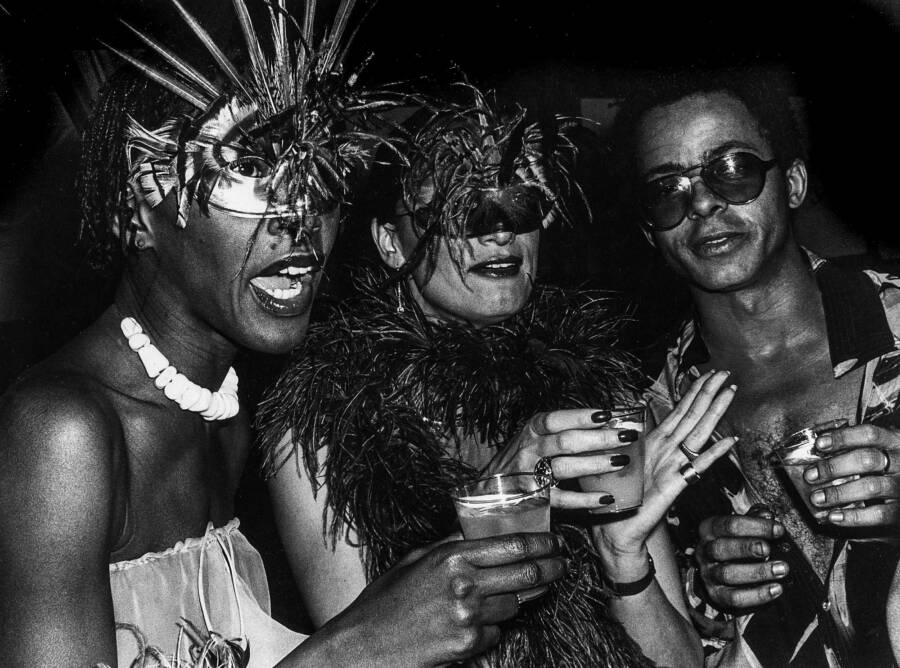
Rose HartmanBethann Hardison and Daniela Morera, in feathered masks, with the designer Stephen Burrows at Studio 54 in 1978.
As evident by the Studio 54 photos, the nightclub was a place of debauchery and pleasure — and had been that way since day one.
"It was a total, overwhelming experience," doorman Marc Benecke stated about the opening night. "Just throngs of people. All these people dressed up, and the drag queens in their incredible costumes. Just throngs of people. All these people dressed up, and the drag queens in their incredible costumes."
Inside the club was not much different. Guests recall cramming into the packed club, avoiding the groups dancing haphazardly together and the couples embraced on the sofas.
Rival club owner Arthur Weinstein recalled going to the club on opening day and seeing the mass of people.
"It was pure theater magic," Weinstein stated. "Suddenly Steve Rubell was on the floor with Bianca Jagger and it was snowing confetti on them. It was like a scene from a movie. I thought 'Holy shit! This is it. I'm destroyed.'"
Part of the club's success came from its intense guest selection process. Studio 54 photos show Benecke, who was primarily responsible for choosing who could enter the club, climbing the club's exterior and pointing out guests.
"We called it casting a play," Benecke stated. "Or tossing a salad. We don't want all tomatoes. When you have a lot of lettuce, you have to mix in other ingredients. Sure, some big tomatoes get in all the time, but you have to include other vegetables, too."
In essence, only the fabulous could enter Studio 54, and that created a club clientele that was primarily celebrities, women, and members of the LGBT.
"Other clubs were different. My gay friends were very androgynous-looking, and... at Studio 54 they really loved kids like us that were the fashion freaks," Valerie LeGaspi told The New York Times.
As for the party scene in the club, it only became wilder as time went on. The Wall Street Journal and CNN reporter Dan Dorfmann explained this of the club:
"There's never been a place like that for any reporter. How could you not walk out with three stories? There were so many interesting things going on. Forget about the dancing, forget about the excessive drinks, the grass they were selling all over the place, the coke stuffed into the banquettes. Forget about the upper balcony where people were having sex. What really counted was there were so many people there, they were drinking, they were relaxed, and they talked. It was Storyland! That was what it was. It was Storyland."
Federal Charges Spell The End For The Nightclub
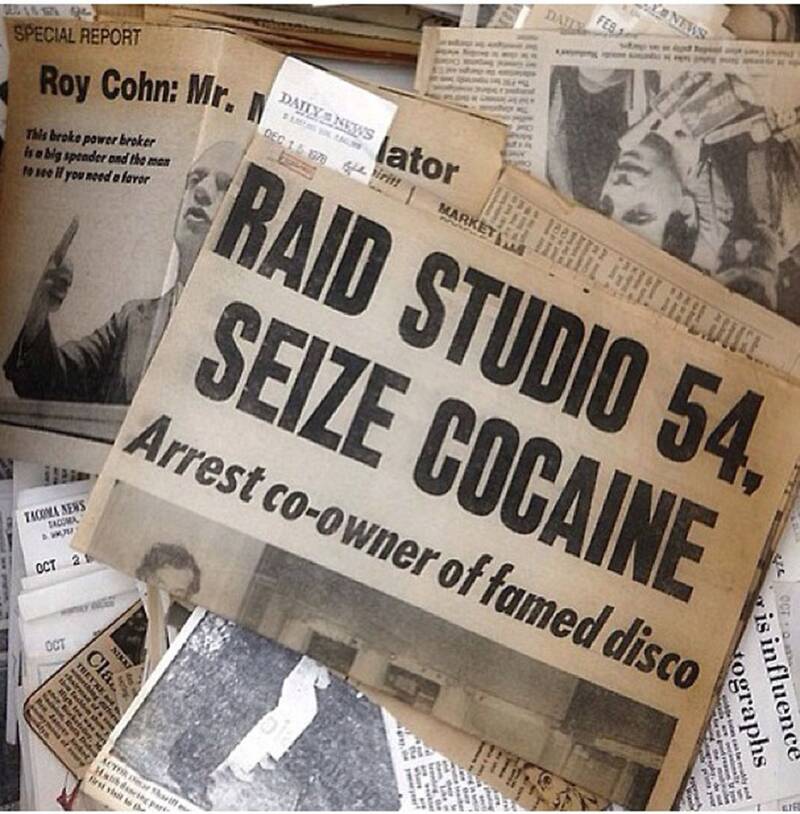
New York Daily NewsNew York Daily News headline about raids at Studio 54.
The downfall of Studio 54 began with a complaint to the Internal Revenue Service (IRS) from Donald Moon, one of the club's disgruntled former employees.
In December 1978, a tipster called the IRS to report that Rubell and Schrager had not paid the correct amount of taxes the entire time the club was in operation. Records show that the club only paid $8000 in taxes in 1977. Additionally, the tipster claimed that the owners illegally stored cocaine in the club's basement.
With this tip, the federal government raided the club and reportedly seized $600,000 in garbage bags hidden in the building, 300 Quaalude pills, and a few ounces of cocaine.
Police officers arrested Rubell and Schrager, charging them with tax evasion, obstruction of justice, and conspiracy for allegedly pocketing nearly $2.5 million in unreported income.
When Assistant U.S. Attorney Peter Sudler asked Schrager if he would get into Studio 54 during questioning, Schrager told him, "No. You're one of the gray people."
"I was in my office, I thought the agents were going to fall on the floor," Sulder recalled. "I thought this is unbelievable. What chutzpah!"
Despite denying the charges, Rubell and Schrager both received a sentence of three-and-a-half years in prison and a $20,000 fine in January 1980.
Then, on February 2, 1980, the two men attended the last party at Studio 54 before heading off to an Alabama prison. In their absence, the club remained open but had lost its liquor license, leading to a loss of interest among partygoers. The club's final night was in March 1980.
Various efforts to revitalize Studio 54 resulted in failure, and the club eventually fell into the hands of the Roundabout Theater in 1998 — its current owner.
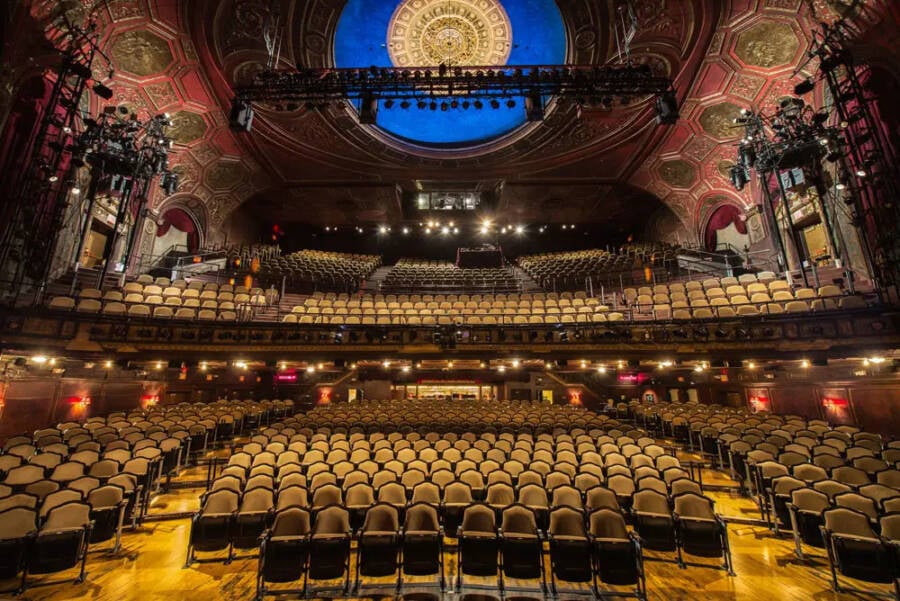
Roundabout Theater CompanyStudio 54 is now owned by the Roundabout Theater Company.
Disco began to die out in light of the AIDS crisis and growing discontent with its aesthetic and popular successes. The growing resentment for the genre came to a head on July 12, 1979 — Disco Demolition Night. At least 50,000 people came to the White Sox and the Detroit Tigers game in Chicago to watch fans destroy massive amounts of disco records. What started as a quirky promotional event to get more sports fans into the stadium became a full-blown riot.
For many people, Disco Demolition Night marked the end of Disco's reign over the music industry.
As for Rubell and Schrager, both men were released from prison after only a year and quickly dove into new projects.
"We went in and then we came out ready to get started," Schrager said according to an Alabama news source.
With disco in the past, the duo invested in three hotels in Manhattan, building a $200 million empire in only five years. However, the comeback was dealt a devastating blow. Rubell unfortunately contracted HIV, and on July 25, 1989, he died from AIDS at only 45 years old.
Now, Schrager continues to work on his real estate business in New York, offering interviews about his experience and reminiscing over Studio 54 photos.
"The place really exploded. It was like a meteor that just crossed the sky, but it was cursed. It crashed, and it took everybody that was involved with it," Schrager spoke of the club.
Enjoy these Studio 54 photos? For more New York drama, be sure to check out what the city looked like in the 1970s. Then, step inside the 1990s rave scene at its neon zenith.
